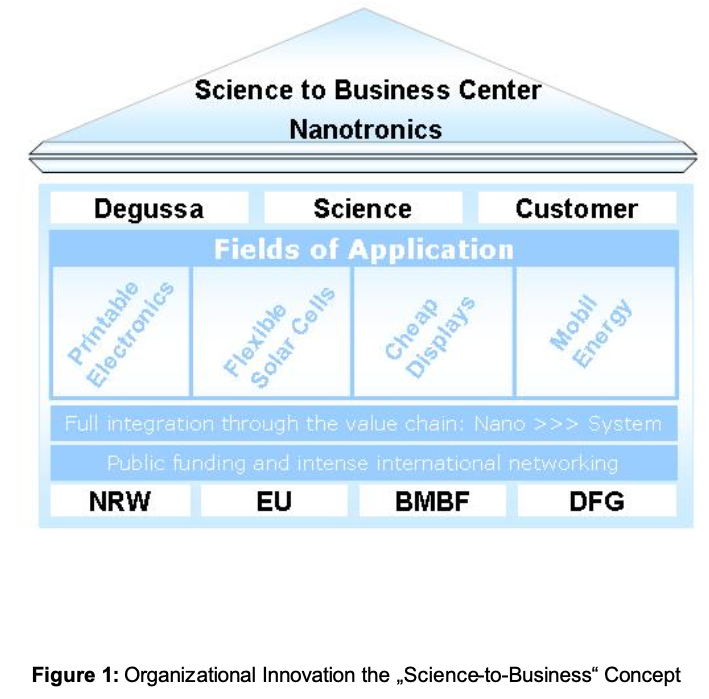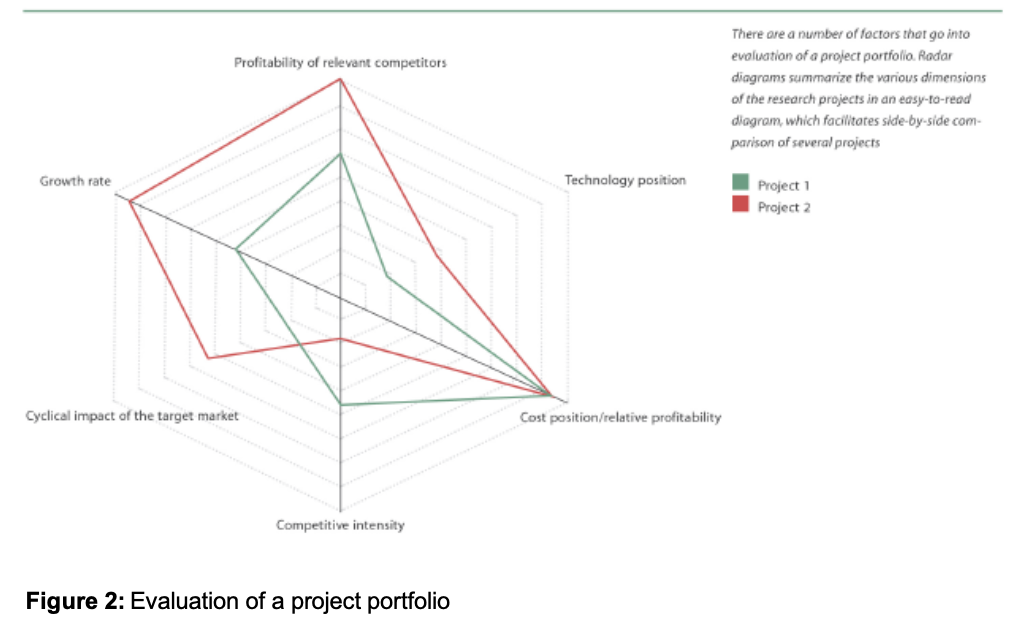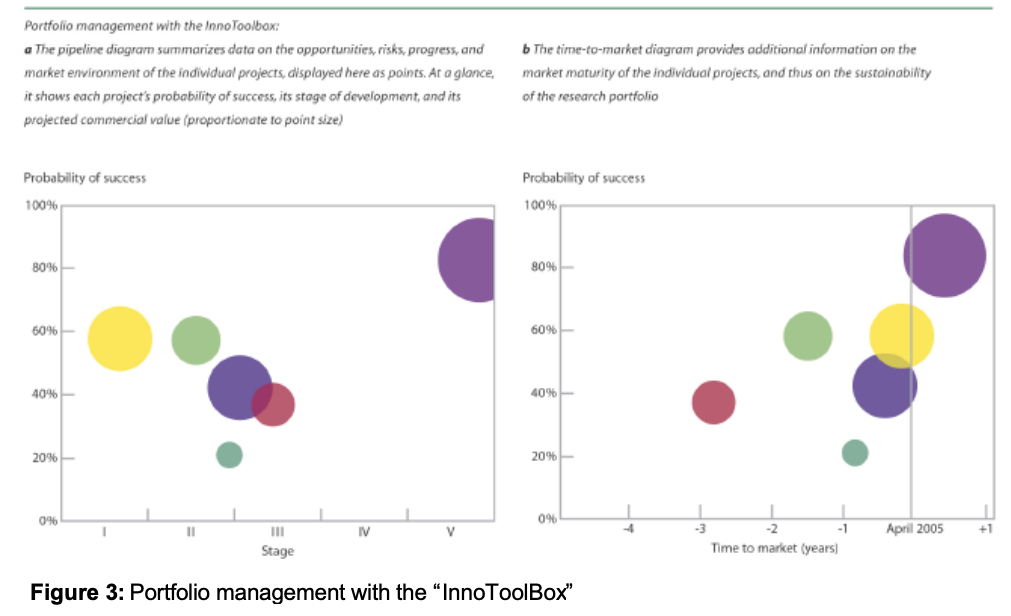High-Performance Research for High-Tech Materials 1. Degussa’s Science-to-Business Center Nanotronics 2. Four Percent for the Future
Abstract: High-performance research for High-tech materials is an article about Degussa AG ́s research efforts and strategy. Degussa AG, Germany, has decided to increase investment in research and development significantly—from 3.1 percent of sales revenue in 2004 to 4 percent by 2007. How is the firm going to achieve this goal? The paper is divided into two parts. First Dr. Andreas Gutsch gives newest insight into the Science-to-Business Center Nanotronics. Second an interview with Prof. Dr. Michael Dröscher answers questions about research strategy and project portfolio management.
1. Degussa: Science-to-Business Center Nanotronics
Degussa AG, Düsseldorf, the world’s leader in specialty chemicals, opened its new Science-to- Business Center Nanotronics at the Marl Chemical Park in April 2005. The Science-to-Business Center is a consequential enhancement of the project house philosophy. Its concept is based on integrating a close network between the fundamental research at the universities and the industrial application and marketing expertise. As it can significantly reduce the time from invention to market-ready product, this approach has clear competitive advantages.
Scientists from universities and research institutes, from small- and medium-sized enterprises, and from Degussa will all work in close cooperation in the Science-to-Business Center. The Center will also temporarily integrate the employees of universities and research institutes, thereby combining excellent scientific expertise with industrial project management and the infrastructure of an advanced chemical site. Furthermore, the Science-to-Business Center will strengthen practical scientific education, since the acquired know-how will flow directly back to the participating universities and research institutes.

System solutions for the electronics industry
Degussa is focusing on “Nanotronics” for its first Science -to-Business Center, the close interaction between nanotechnology and electronics. Nanotronics was selected because the development of innovative system solutions based on nanomaterials for the electronic industry promises to be a highly profitable business. The Science-to-Business Center will primarily develop electronic systems and elements whose core components consist of new types of electrically functional nanomaterials and nano-coatings. Some of the fields of application include printable electronics, low cost displays, flexible solar cells and mobile energy systems.
Printable electronics
Two of the Center’s projects aim at electronics based on printing techniques. Radio frequency identification (RFID) technology, for example, allows data to be stored and read without being seen or touched. The cost of using RFID chips are too high up to now, from being widely adopted in transactions for mass applications as a replacement for bar codes on packages.
The current practice of vaporization of transparent and highly conductive oxide coatings onto displays and monitors is also expensive and time-consuming today. The involved scientists are convinced that both—RFID chips and oxide coatings—can be produced far less expensively with high-end printing technology.
The approach to these projects is a prime example of the R&D philosophy and innovative structures of the Science-to-Business Center. The application is the objective and starting point at the same time, because the “begin-at-the-end” mindset immediately helps to visualize all developmental problems. The search for a suitable printing technique is a good example: Currently, there is no technology available that can print layers in the range of several thousandths of a millimeter quickly and at a high resolution. The triad of industry, science and customer also plays an important role in solving these problems. In printable electronics, the relevant basic knowledge about nano-silicon comes from the universities. Degussa has the essential know-how in chemical and process engineering to be able to convert nanoscaled silicon from a powder to a liquid, and then to a type of printing paste. The customers contribute their knowledge about the printability of packages and the requirements of the oxide coating for displays and monitors.
Flexible solar cells
In a third project that has just begun, Nanotronics researchers are working on making solar energy simple and cheap, in order to meet the increasing demand for regenerative energy sources. The idea behind the project is to make conventional silicon spreadable with the help of nanoparticles, which will then allow the production of flexible solar cells. Cells of this type would be less expensive to produce, and their use—the generation of electricity from solar energy—could increase considerably. This project also follows the R&D philosophy of the Science- to-Business Center: As with all other projects, the focus here is on the marketing of a system solution and economic considerations playing an important role from the very first moment.
SEPARION ceramic foils
The “Separion” project, which involves ceramic separator foils, is one project that has advanced considerably further. Batteries require separators to separate the anode from the cathode. SEPARION separator foils from Degussa consist of a polymer non-woven material inside, which on either side is coated with an extremely thin layer of a metal oxide mixture. This ceramic coating consists of nanoparticles. The actual competitive advantage is the sintering process, during which the ceramic material is anchored and reinforced on the plastic. In the case of the SEPARION foils, this is successful at temperatures of 250°C, up to 1,000 °C lower than conventional sintering processes.
The idea of combining a continuous ceramic coating with a low-cost polymer substrate is as new as the unique manufacturing process itself. In the past, ceramics could be sintered only in individual batches in kilns at significantly higher temperatures. Degussa’s novel low-temperature sintering method not only allows for continuous production, but is also considerably more economical.
The initial application of the foils in new types of lithium-ion batteries is also promising. Because lithium-ion batteries are lighter, smaller and more powerful than other battery types, they have already captured as much as 99 percent of the mobile communications market, including cell phones, camcorders, and laptops. But a great challenge remains ahead, because plans are to use the innovative accumulator batteries as a power source for electric powered and hybrid vehicles. Such vehicles are already extremely successful in the United States, where Toyota alone will sell over 500,000 models in 2005.
For automobile applications, the performance of lithium-ion batteries will have to be increased by a factor of at least five. In the mobile industry, however, the demand for the safety of these “power packages” is growing just as fast. Traditionally, semi-permeable membranes made of polymers (polyethylenes or polypropylenes) have been used in lithium-ion batteries to separate the anode from the cathode. They have some serious disadvantages: They are flammable; the batteries are unsafe if a fire occurs; above 140°C they lose their temperature stability, and at low temperatures their ability to become wet with liquid electrolytes is severely restricted. Their life cycle is also limited. Intensive tests using SEPARION foils have shown that all these limitations can be overcome by using the new types of ceramic foils.
Given the existing opportunities, the foil production will increase tenfold this year. An additional plant has been set up in the pilot plant of the Nanotronics Center to meet this demand. With a capacity of 2 million square meters per year—the equivalent of nearly 300 soccer fields— the plant completes the step from pilot to commercial production. And that’s just the beginning of an extraordinary success story. The goal for Degussa is clear: to become the preferred system supplier for the mobile electric energy of tomorrow.
Permanent project control
The Science-to-Business Center is characterized by close cooperation across disciplines and industries: It allows the development of a system solution to be approached from different angles, and integrates each link in the entire value-added chain. Twice a year scientists, controllers and marketing experts review the projects together to make sure they are still on course and on schedule. The aim is not only to show successes but to discover early on if a project is headed for a dead end.
The novel focus of the Science-to-Business Center, however, also calls for a special kind of employee—scientists with an outstanding education, who also have a highly developed sense of business trends and markets.
The Center’s laboratory and pilot plant equipment is perfectly geared to the central nanotronics technology platform, which covers all levels in the value-added chain, from the chemical raw materials to the end customer’s products. From the first laboratory test to pilot production in the pilot plant, the Center contains equipment and machines for the manufacture and characterization of functionalized nanomaterials, dispersions and formulations, hybrid and composite materials, functional layers, semifinished products, and demonstrators.
The projects of the Science-to-Business Centers Nanotronics are co-financed by the European Union and are financially supported by the state of North Rhine-Westphalia in Germany and other public institutions. This reveals the fundamental importance of this concept also outside Degussa.
2. Four Percent for the Future
Introduction
Following is an interview with Prof. Dr. Michael Dröscher, head of Degussa AG’s Innovation Management Corporate Division, on research and innovation management.
Degussa AG, Düsseldorf, Germany, has decided to increase investment in research and development significantly—from 3.1 percent of sales revenue in 2004 to 4 percent by 2007. With sales revenues at €11.2 billion and research investments at €348 million in 2004, the research budget will be increased by some €100 million to €450 million by 2007.
What is Degussa aiming for with this considerable increase in research expenditure—and why 4 percent?
We’re expecting more added value with new, innovative products, and 4 percent is in the upper range of the amount that our competitors are investing.
If you invest more in research—won’t this mean a deficit somewhere else?
We’re planning to spend more money on research under the condition that Degussa continues to grow the way we expect. We’re not planning to give up other things for this, but we want to have a portion of our growth in earnings flow into research too. We’re thus investing in the future. And we even aim to generate more sales and EBIT—earnings before interest and tax—in the short term by mobilizing resources.
Could you tell us what you mean by “mobilizing resources”?
Luckily, we have more ideas than resources to make them a reality. This means that the increase in investment doesn’t get used to find new ideas but to strengthen the processes we use to transform our expertise more effectively into profit. With a larger budget we can encourage and accelerate even more innovation—speed is an important factor in innovation. Of course, you can’t do it without ideas. But if we have more money at our disposal, we can also be more daring, and take a chance on riskier research subjects, implement projects faster, and support projects that one business unit couldn’t afford to do by itself. Our goal is to generate faster additional, profitable sales, and therefore more organic growth.

How are you going to spend the additional funds specifically?
We’re going about it in four different ways. On the one hand, the business units will increasingly conduct research and invest where new business segments are lying dormant.
But we also want to play a more active role in publicly funded partnerships, and make headway in fields that are new for Degussa—the way we have with our new Nanotronics Science-to- Business Center in Marl, for example. Nanotronics refers to the development of nanomaterials-based system solutions for the electronics industry. The centerpiece of our Science-to-Business concept is the idea of science and industry working together under one roof. We want to work more closely with research institutes and universities, and plan to step up corporate funding to make this possible. Currently, corporate-backed projects are financed up to 50 percent by the Group and up to 50 percent by the business units. They carry more risk and last longer than is typical for the research of the business units, which tend to take on projects that have a goal of three years to market launch. The Group finances longer projects that take five years to reach market maturity. The project houses, for example, which develop complete technology platforms for the Group, are also financed up to 50 percent by the Group. It also advances internal start-ups, in which we go to market with entirely new products. We want to work on this aspect even more in the future.
A third complex in which we want to invest more is improving the utilization of our knowledge, and strategically expanding it. For example, if a customer patents a new product of ours for his area of application, we can no longer sell that product to other customers. This is why we want to focus more energy on selling an individually tailored service, and retain the basic application patent internally.
Last, item 4 on our list deals with buying expertise. We plan to deal more with start-up companies, and try to integrate the scene of the small, research companies financed with risk capital more into development. And not just in Germany but internationally. We’re also currently building research partnerships in China, and have just opened a research center there. We maintain these kinds of partnerships in Eastern Europe, as well. We see a lot of potential for our company there.

How will you ensure that the right ideas are selected from a sea of possibilities?
We have to develop a clear strategy that defines search fields and finds growth markets. The question must always be: Where can I sell my expertise on the market in the form of new products faster than the competition?
Surely you won’t be relying on your instincts alone?
We have now decided to use an electronic tool Group-wide, the “InnoToolBox.” The tool combines classical project management with business-plan factors, and enables us to vary different independent variables. This allows us to improve the classification of individual projects and better evaluate the entire research portfolio. Typical questions are: What happens if the plant is more expensive than we planned? If we’re spending more? If the price of the product drops on the market?
The answers lead us to a key figure, the “net present value” of the project. It tells us how much value can be created with the project if it is successful. But because there’s no guarantee of the success of a project, we also have to consider the possibility of technological success, and the probability of market success. And, of course, time-to-market also plays an important role. At the end of the analysis, we have four key figures with which we can integrate a project into the portfolio and evaluate it. This gives us added security that we’re doing the right thing the right way.